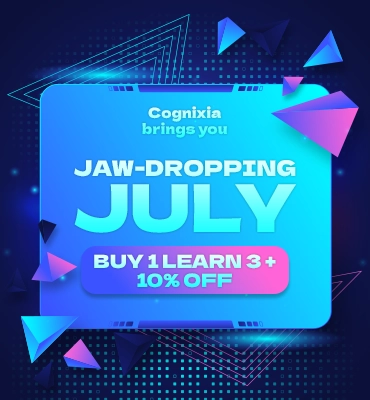
- Overview
- Schedule Classes
- What you'll learn
- Curriculum
- Feature
- FAQs

Overview
Machines have been an integral part of our lives since the industrial revolution. They’ve become vastly more sophisticated, and integrated into our daily lives in this era of Industry 4.0. It’s imperative that we embrace the latest technologies and innovations, as professionals who lead the development and growth of sophistication. By keeping pace with our knowledge of disruptive emerging technologies – including ML, AI, blockchain, cloud computing, big data, and more. So, specialization course that covers an introduction to advanced Machine Learning with Deep Learning training.
Adobe reports that the share of jobs requiring artificial intelligence has increased by 450% in the last five year,
with 47% of digitally mature organizations having a defined AI strategy in place.
According to Monster.com, the three most in-demand skills are Machine Learning,
Deep Learning and Natural Language Processing.
With modern technologies evolving rapidly, staying competitive means keeping pace with the latest skills and capabilities. Taking courses that incorporate advanced machine learning concepts with deep learning in one complete package is crucial to maintaining your skillsets and continuing to meet the demands of the industry.
Cognixia offers a comprehensive training package with a hands-on case study approach. We also offer enabling participants to explore the practical aspects of advanced level machine learning, artificial intelligence, and deep learning.
The course is a great fit for the career paths of IT professionals, electrical and electronic engineers, designers, and solution architects and for entrepreneurs who are keen to employ these technologies for their business. Cognixia highly recommends this course for professionals who work in the pharmaceuticals, real estate, sales, finance, designing, manufacturing, electrical, retail, and healthcare domains.
Schedule Classes
Looking for more sessions of this class?
